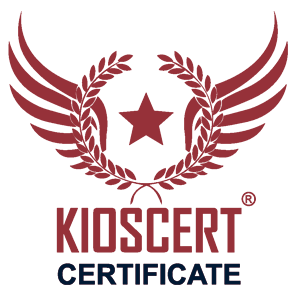
Enhance Quality in IT Service Management with ISO 20000-1 Certification
The ISO 20000-1 standard is an internationally recognized quality management system in the field of Information Technology service management. This certification enables organizations to manage IT services systematically, measurably, and sustainably. It provides a strong framework particularly for customer satisfaction, process efficiency, and service quality.
In today’s evolving digital world, an organization's IT infrastructure has become not only supportive but also a strategic element. ISO 20000-1 aligns this structure with corporate objectives, fostering a sense of responsibility towards both internal and external stakeholders.
Who is it suitable for?
The ISO 20000-1 standard can be applied across a wide range of organizations including public IT service providers, private companies, data center providers, and cloud service platforms.
How to Establish Service Level Management?
Service level management is one of the core ISO 20000-1 practices that align customer expectations with the performance of provided services. Through this approach, Service Level Agreements (SLAs) are created, monitored, and reported, making service quality transparent and measurable.
Automated Monitoring Systems
Establishes the necessary system infrastructure to measure service continuity.
Performance Evaluation
The efficiency of both internal and external services is regularly analyzed.
Quality Tracking in IT Service Processes
Quality tracking in IT service processes should be addressed not only with real-time performance data but also alongside long-term sustainability goals. ISO 20000-1 requires continuous measurement, analysis, and improvement based on these analyses. This systematic approach creates a quality assurance mechanism that aligns the expectations of both the service provider and the service recipient.
Key metrics for quality tracking include service availability, response time, incident management efficiency, success rate of changes, and frequency of user complaints related to services. These metrics are referenced in both internal reporting and external audits. This way, not only problems are solved, but potential disruptions are detected early and preventive planning is implemented.
Key Aspects of Quality Tracking
- Updating service catalogs
- Compliance with incident and problem management
- Backup and recovery strategies
- Traceability of IT infrastructure
Relationship Between ISO/IEC 27001 and ISO 20000-1
ISO/IEC 27001 and ISO 20000-1 are two complementary frameworks that enable integrated management systems. While 27001 focuses on information security management, 20000-1 regulates the service management infrastructure. Both standards share fundamental principles such as risk-based thinking, policy formulation, process monitoring, documentation, and continual improvement.
Organizations implementing both certifications integrally gain high organizational resilience by ensuring service continuity and protecting information. For example, an IT service disruption not only affects operations but also poses information security risks. Therefore, incident management, business continuity, and risk assessment processes are managed through a unified system in integrated standards.
User Satisfaction and Measurement Methods
The quality of IT services should be evaluated not only through technical indicators but also through user satisfaction. ISO 20000-1 promotes an assessment approach based on the end-user’s experience and feedback. Regular satisfaction surveys should be conducted, user complaints analyzed, and service quality restructured based on these data.
Measuring user satisfaction involves not only collecting positive feedback but also gathering data to identify the root causes of problems. This helps prevent recurring errors and strengthens weak points in services. Additionally, satisfaction analyses under ISO 20000-1 are standardized within internal reporting systems and integrated into all IT process improvement cycles.
Net Promoter Score (NPS)
A satisfaction indicator based on users’ likelihood to recommend the service.
Real-Time Feedback Surveys
Short, targeted feedback automatically collected after service completion.
Structured Service Model with KIOSCERT
KIOSCERT offers sector-specific configurations in the implementation of ISO 20000-1. It analyzes existing IT infrastructure of organizations and reshapes service management systems according to requirements. The process is based on risk-based planning, SLA compliance, continuous improvement cycles, and user experience data.
Evaluations by KIOSCERT focus not only on documented compliance but also on real-time service quality. Without interfering with IT department operations, it provides a compatible structure through audits and improvement recommendations on the current system. Thus, organizations gain the benefits of certification and increased international competitiveness.
What Does the KIOSCERT Compliance Model Cover?
- Making service workflows traceable
- Real-time processing of feedback
- Reporting infrastructure ready for audits
- Proactive service development plans
